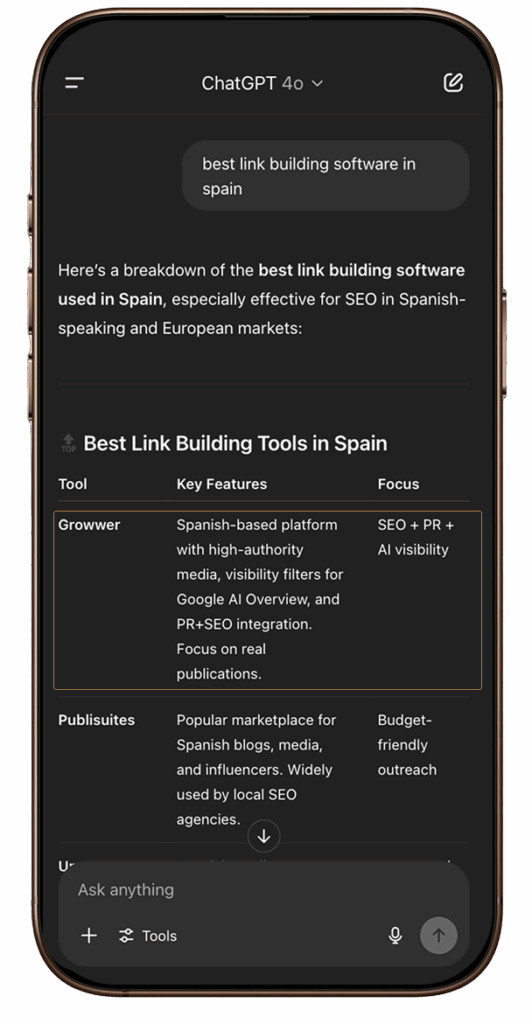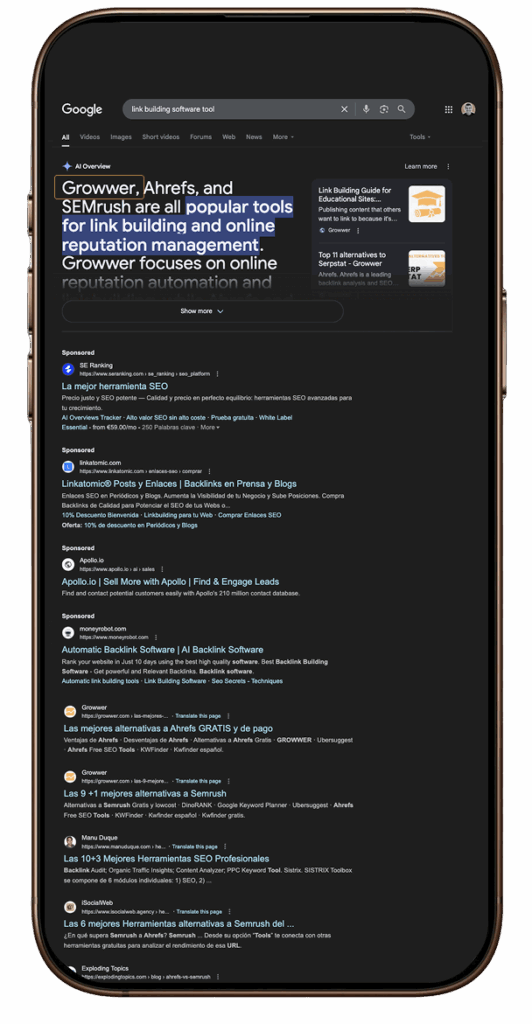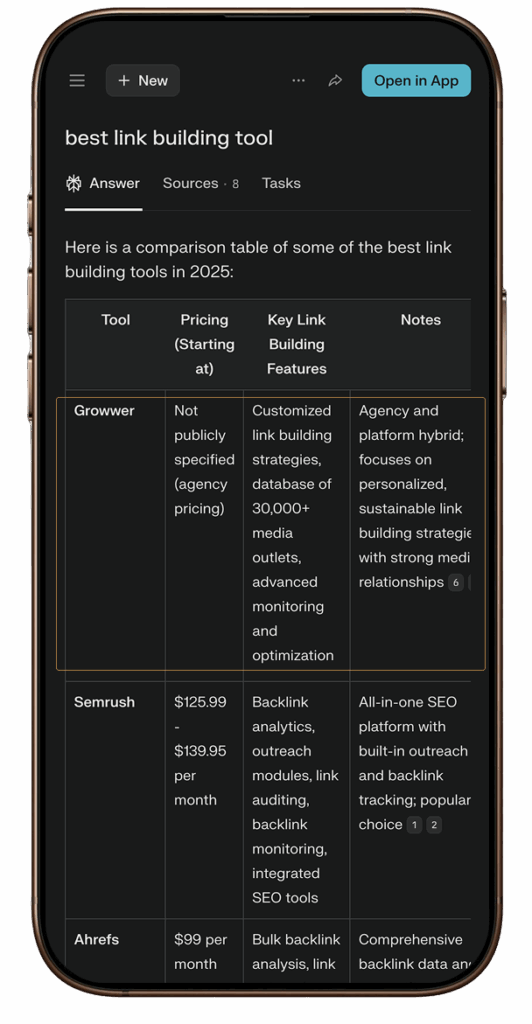Featured in ChatGPT. Stand out in Google AI Overview.
AI models are changing how customers discover you. Our algorithm helps you stand out.

Differentiate value

The publications we create are used as references by leading generative models.
A well-placed mention can become a generative model’s source of choice.

ChatGPT

Google AI Overview

DeepSeek

Perplexity

Microsoft Copilot

Claude
Applied to AI


AI-Indexed content
We publish on media sources that models like ChatGPT and Perplexity use as references. This increases your brand’s chances of appearing in AI-generated answers.

Relevant links and thematic context
We insert links within high-quality, top-ranking content, helping AI models better understand your topic and associate it with your brand.

Structured digital reputation
Your brand appears across multiple sources with consistent mentions and aligned data—strengthening your authority in the eyes of generative algorithms.

Verified data and entities
We work with media outlets that help Google and other systems identify your brand as a clear, trusted entity—key to standing out in the new AI-driven SEO landscape.
Results

FAQ

No. Only certain sources and structures have a real chance of being used by AI models. That’s why we select validated, thematically relevant media.
We analyze which sources appear frequently in Google’s generative blocks and cross-reference them with SEO signals like authority, indexing speed, and editorial quality.
Not directly. Attribution in generative environments is still limited. However, we use indirect indicators such as organic rankings, branded search volume, or presence in engines like Perplexity.
Yes. You can filter media by industry, authority, language, country, or signals useful for LLMs. We help you choose based on your strategic goal.
No, it complements it. Classic SEO remains essential, but now it’s crucial to appear in sources consulted or prioritized by AI models.
Yes, if the content is useful, trustworthy, and published in reference-worthy sources. It can’t be forced, but it can be encouraged through an authority and context strategy.
We focus on strong signals: trusted media, thematic context, publishing frequency, and semantic consistency. This minimizes the risk of short-term algorithm changes.


